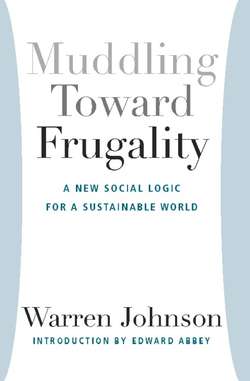Читать книгу Muddling Toward Frugality - Warren Johnson - Страница 16
На сайте Литреса книга снята с продажи.
Renewed Disequilibrium: The Modern Era
ОглавлениеThe age of discovery provides a perfect example of how disequilibrium with all its far-flung consequences can be triggered. Once the initial discovery of the New World had been followed by conquest, and the gold started flowing into Spain, it was inevitable that other European countries with the capacity to do so would join in the scramble, even if it meant plundering Spanish galleons in order to get started, as was the case with England. To do otherwise—not to join in the free-for-all—would have meant relative decline for any abstaining country.
The riches flowing into Europe produced a great increase in the money supply but little increase in goods, and the predictable result was inflation. This situation impoverished peasants and nobles alike but made the bankers of Florence and Venice wealthy enough to exhibit their new affluence by patronizing the arts. The church in Rome became caught up in the spirit of the times, and the pope became a Renaissance prince. Not surprisingly, northern Christendom refused to be a party to these excesses. In reacting, the Protestants threw out much of what was good in Catholicism along with the bad. The stage was thus set for centuries of religious conflict, including some of the bloodiest wars in European history.
In India, the British East India Company stirred up internal strife to help establish its control, and then expropriated enough precious metals, jewels, silks, and spices to make London the wealthiest city in the world. China was more difficult to penetrate, but finally trade was initiated, assisted by gunboats and opium. When China tried to outlaw opium and burned the warehouses where it was stored, the action was considered enough justification for Europeans to come in and take larger and larger “trade concessions” in order to protect “free trade.” Africa was left relatively alone for a while since it did not have any obvious wealth to lure adventurers; to be poor was the greatest protection, for a time at least. But when Europeans, and by this time Americans, had worked through most of the highly valued prizes to be obtained from the rest of the world, there were only human beings left in which to “trade” profitably. The slave trade took some 40 or 50 million people from Africa, but only one-third ever reached the New World alive. It is interesting to speculate how we would have dealt with the Indians of North America if this country had been as densely populated with natives as was Africa. Of the 1 to 2 million Indians estimated to have been in America at the time of the first white settlements, only 25,731 survived in 1860.11
While Europe’s museums and palaces filled up with the art treasures taken from the rest of the world, its own internal disruption continued. After centuries of religious wars following the Reformation, European peasantry then had to face the slow undermining of their livelihood as the structure of the medieval world was slowly dismantled. Calvin’s emphasis on economic success as an indication of whether one was predestined for heaven (a belief that is hard to find much basis for in the Bible) had removed the medieval restraints on the acquisition of wealth and replaced them by a strong incentive to make money. In effect, Calvin had contrived a device to permit the commercial classes of northern Europe to do what they wanted to do anyway—to get involved in the economic activity stimulated by the age of discovery. But since the Calvinists did not approve of consuming the wealth earned—that was too much like the church in Rome—there was nothing else to do with it but to reinvest it. The result was capitalism, the economic system by which profits were reinvested rather than spent.12
This system soon generated so much economic momentum that it left Calvinism behind. As the free trade movement gained the ascendency, the medieval restraints on economic activity were removed. The enclosure movement transferred common lands into private holdings; the market was allowed to determine price and wages; guilds were disbanded; and in 1870 the Corn Laws were repealed in England, and cheap imported American grains flooded in and ruined small farmers and landed aristocrats alike. Power shifted irrevocably to the commercial classes. The choices for people in the villages were reduced to being landless agricultural laborers at less than subsistence wages, or going to work for twelve or fourteen hours a day in the factories of the industrial towns and cities. A good many peasants in the world today face the same choices except that now there are fewer factory jobs, emigration is not possible, and there is the added affliction of overpopulation.
We have been able to avoid feelings of guilt about all these brutal changes because of the belief that change was bringing something better to people, no matter how painful the process. The Puritan factory owners told their suffering workers that their misery was God’s stimulus to make them improve themselves. (Not only were factory workers exploited, but they were told it was good for them!) Our forebears were confident enough about what they were doing to disrupt other cultures in order to let their own religion and economics in. Whether such changes were actually an improvement or not, only time can tell, but, there is no denying that throughout this period of history we have tended to see the worst in other peoples and consistently pictured them in negative terms. The American Indians were savages who were killing innocent settlers. It was necessary to see other people as pagans and barbarians in order to justify treating them as such.
